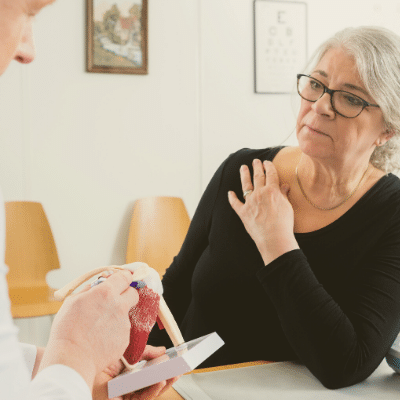
Treating Tennis Injuries!
The West London Clinic warmly presents our specialist news and views blog!
Enrich your wider reading and learn about ‘Treating Tennis Injuries!’ Below:


The West London Clinic Blog
Mr. Ibrahim – Specialist in Orthopaedics and Tennis Injuries
Mr. Ibrahim, a distinguished Consultant Orthopaedic Surgeon, specializes in diagnosing and treating arm-related injuries, with a particular focus on conditions prevalent among tennis players. His approach centers on accurate diagnoses and tailored treatment plans, underpinned by specialized fellowship training in arm injuries and nerve-related issues. Graduating with a first-class honours degree in Orthopaedics from University College London and furthering his expertise through Imperial College London, Mr. Ibrahim’s academic journey was distinguished by a prestigious master’s degree in Surgical Education. Noteworthy is his role in pioneering the UK’s enhanced recovery program for shoulder replacement surgery, drawing from his experiences as a former University of London tennis captain and an active player at The Queen’s Club.
Click image for consultant info! ->
Common Tennis Injuries (And Why You Need a Diagnosis)
Tennis is synonymous with summer for many of us. It is a high-impact, fast-paced sport that is fun to play and great for fitness. Along with golf, it is one of the first sports to be permitted following the virus pandemic lockdown. For this reason, right now many people will be taking up the game for the first time, or dusting off the racket after a few years! Tennis strokes, in particular the serve, cause repeated stress to the shoulder and elbow. Whether you are a seasonal or year-round all-weather player, it’s likely that you haven’t been striking a ball for a little while and, unfortunately, this could result in…
Rotator Cuff Injuries
The rotator cuff is a group of muscles and tendons that keep the ball of the humerus bone centered on your shoulder socket. You also use the rotator cuff for rotating your arm, which is really important during a tennis serve. Tennis players who are older than 40 or so are particularly vulnerable to rotator cuff tears because the tendons degenerate naturally with age. In many people, this degeneration goes unnoticed because blood flow to the area can be quite limited and therefore no major inflammation occurs. Eventually, a full tear suddenly occurs with a seemingly innocuous activity, like a tennis serve, resulting in pain and weakness. In other people who play tennis regularly, painful microtears or partial tears may develop in the rotator cuff as a result of repetitive use or jarring from hitting the ball. This is referred to as tendinopathy (formerly tendinitis or impingement syndrome). The body reacts through an inflammation process called subacromial bursitis, which is an attempt to heal the tendon. It causes pain throughout the upper arm. At first, you may just notice discomfort after playing, but eventually it can progress to constant pain, which is often worse at night. If taking a break from tennis, combined with physiotherapy, doesn’t resolve the problem, it is wise to seek the advice of a specialist. A scan will usually be recommended to diagnose the extent of the problem.
Common Tennis Injuries to the Elbow
One of the most common injuries among racket sports players is tennis elbow tendinopathy. This painful condition, felt over the outer part of the elbow and upper forearm, is caused by overuse of the hand, forearm, or other muscles in the arm. Although linked to playing tennis, especially with a one-handed backhand stroke, this is not the only cause. Golfer’s elbow tendinopathy results in soreness felt over the inner part of the elbow and upper forearm. It is commonly related to repeated impact with the ball on the forehand stroke and is more common in tennis players than golfers! You may also develop biceps tendinopathy (pain or tearing of the biceps muscle at the front of your upper arm) or triceps tendinopathy (small tears in the tendon at the back of your arm caused by repeatedly extending your elbow).
Treatment of Tennis Injuries
The treatment you receive will depend on the type and severity of your injury. For example, the primary treatment for tennis elbow tendinopathy is to take a break from playing tennis, or any other activity that aggravates the pain. Ice may be used to reduce the pain, and it may also help to wear a support to protect the joint from too much movement. A physiotherapist can recommend exercises to strengthen the muscles and tissues around the elbow and improve flexibility. You may also like to consult a tennis coach to check your technique. If this does not resolve the condition, then an injection procedure called ‘dry-needling’ can be arranged by your specialist. Steroid injections are sometimes used to help overcome shoulder complaints, but are not generally recommended for the elbow. If you have a more severe injury such as a torn rotator cuff or labral tear, you may require surgery to repair the tear.
Diagnosing Sports Injuries | London
Unless your injury is mild, it is important to get a proper diagnosis. As orthopaedic surgeons, we will perform a thorough clinical examination and arrange diagnostic tests to assess the severity of the problem. We will then recommend a treatment plan to help you make a full recovery.


